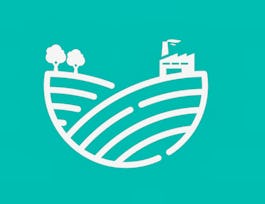Learners in this course will examine global trade agreements -- including policies, barriers, and regulations -- of agricultural commodities, and discuss implications of world and economic disruptions on the food supply chain. Throughout this course, learners will also discuss issues of sustainability, technology, and the environment as it relates to the supply and distribution of food products.



Recommended experience
What you'll learn
Discuss the influence of trade policy and international relationships on food supply and demand.
Compare and contrast differences in world demand for food products between developing and developed countries.
Examine the impacts of compliance with environmental regulations on food supply chains.
Discuss future technologies that may influence issues in the supply chain of food and food products.
Skills you'll gain
Details to know

Add to your LinkedIn profile
6 assignments
See how employees at top companies are mastering in-demand skills


Earn a career certificate
Add this credential to your LinkedIn profile, resume, or CV
Share it on social media and in your performance review

There are 4 modules in this course
In the course orientation, you will become familiar with the course, your classmates, and our learning environment. The orientation will also help you obtain the technical skills required for the course. In the second part of this module, you will explore global trade to identify the types of agricultural commodities, explain global trade policies and considerations specific to agricultural commodities, and examine the impact of global currencies on trade.
What's included
10 videos4 readings2 assignments1 discussion prompt
In this module, you will describe the purposes and impacts of agricultural trade agreements and examine the barriers to global agricultural trade.
What's included
9 videos3 readings1 assignment
In this module, you will describe the growth of agricultural commodities in South America, examine implications of world and economic disruptions on the production and trade of commodities, and compare the demand for food products between developed and developing countries.
What's included
6 videos1 reading1 assignment
In this module, you will identify and describe the impact of technologies on food production, consumption, and demand. You will also discuss the opportunities and threats of feeding the world while also sustainably producing and distributing food and food products. At the conclusion of this module, you will be ready to complete the final assessment for the course and earn your Coursera certificate!
What's included
9 videos8 readings2 assignments
Offered by
Recommended if you're interested in Business Strategy

Anaplan

University of Illinois Urbana-Champaign

Erasmus University Rotterdam

University of Colorado Boulder
Why people choose Coursera for their career




New to Business Strategy? Start here.

Open new doors with Coursera Plus
Unlimited access to 7,000+ world-class courses, hands-on projects, and job-ready certificate programs - all included in your subscription
Advance your career with an online degree
Earn a degree from world-class universities - 100% online
Join over 3,400 global companies that choose Coursera for Business
Upskill your employees to excel in the digital economy
Frequently asked questions
Yes! Although completion of the Coursera course alone is not credit-bearing, it is a required component of a graduate-level Canvas course that can be "stacked" toward advanced credentials such as an academic (transcriptable) graduate certificate or a degree. If you decide to pursue further education, the credits you earn from this course can be applied toward a formal academic program, provided that you meet all the requirements of admission to the certificate or degree.
Access to lectures and assignments depends on your type of enrollment. If you take a course in audit mode, you will be able to see most course materials for free. To access graded assignments and to earn a Certificate, you will need to purchase the Certificate experience, during or after your audit. If you don't see the audit option:
The course may not offer an audit option. You can try a Free Trial instead, or apply for Financial Aid.
The course may offer 'Full Course, No Certificate' instead. This option lets you see all course materials, submit required assessments, and get a final grade. This also means that you will not be able to purchase a Certificate experience.
When you purchase a Certificate you get access to all course materials, including graded assignments. Upon completing the course, your electronic Certificate will be added to your Accomplishments page - from there, you can print your Certificate or add it to your LinkedIn profile. If you only want to read and view the course content, you can audit the course for free.






